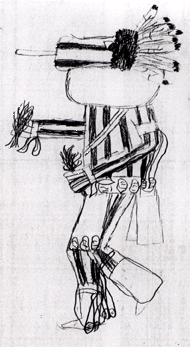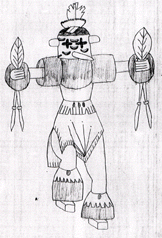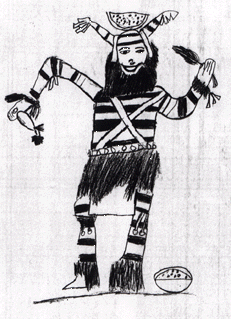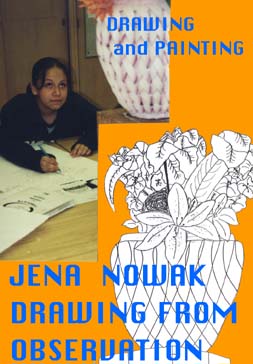
Kristie Lee |

Janet Chanthavong
Jose Gloria-Ramos
|
 |
contact me at mailto:wduncan@kc.rr.com
my web site is http://www.taospaint.com
DRAWING
FROM OBSERVATION LESSON PLAN
for
Drawing
& Painting Class
or
Art, Self Expression & Choice

Kristie Lee |

Janet Chanthavong
Jose Gloria-Ramos
|
 |
|
by observation from Mr Duncan's collection of Kachina Dolls by 8th graders to be used in two printmaking projects in the "Art, Self Expression and Choice" class |
|
|
drew this basket of flowers from observation to use in two paintings one, in transparent watercolor and the other, in opaque acrylics |
 |
This
lesson is designed to be a beginning lesson to develop original
material
to be used in either a painting or printmaking lessons
| Conceptual Objective / this process will reinforce the concept of drawing from observation as the best way to train the eye to see and therefore build drawing skills. | |
| Behavioral
Objective / each student will produce several original drawings
done from observation of a three-dimensional subject set before them.
|
|
| Materials
List / sutible three-dimensional subjects to be utilized
for the painting or printmaking problem to follow, (in this case we are
using a wicker basket full of artifical flowers for painting, and Hopi
Kachina dolls for printmaking) good white paper stock 12X18 or 18X24 inch,
pencils Number 2 or softer, erasers Pink Peral or Art Gum
Vocabulary List and Drawing Concepts |
|
| Line
Quality
Overlapping Shape into Shape Variety Repetition Collograph |
Contour
Line
Texture Plagiarize Positive Areas Negative Areas Value
|
| Procedure
/ Start drawing by carefully observing one shape in the subject before
you and ignore all else.
/ Draw the first shape "full" size (actual size) even if you have to measure it. Try to ignore the entire subject or even what the subject is. Just think of it as lines and shape that you are trying to copy on paper. / Then draw each new shape as it relates to the adjoining shapes. If you ignore the subject and concentrate on the shapes, edges, lines and adjoining shapes you are more likely to "get in the zone" or begin using the Right side of your brain. / Once you begin, do not move the subject or your location in the slightest. Even moving your head a few inches will change your view of the object. / Look for edges which describe shapes, not just an outline. Where a leaf bends it will form a new unique shape. Shadows, colors, textures can help define a shape, look for edges which define shape. / Good drawings always take on a life or soul of their own. Don't be afraid to change things, Repeat interesting flowers, twist unique leaf shapes. Just make your creative additions from careful observation not from your memory. / There is no better training for an artist than to draw, and no better training for the eye than to draw from observation. |
DRAWING LINKS
Drawing from Observation: A Course
Dr. Betty Edwards: A Book Review
Observation Drawing With Children